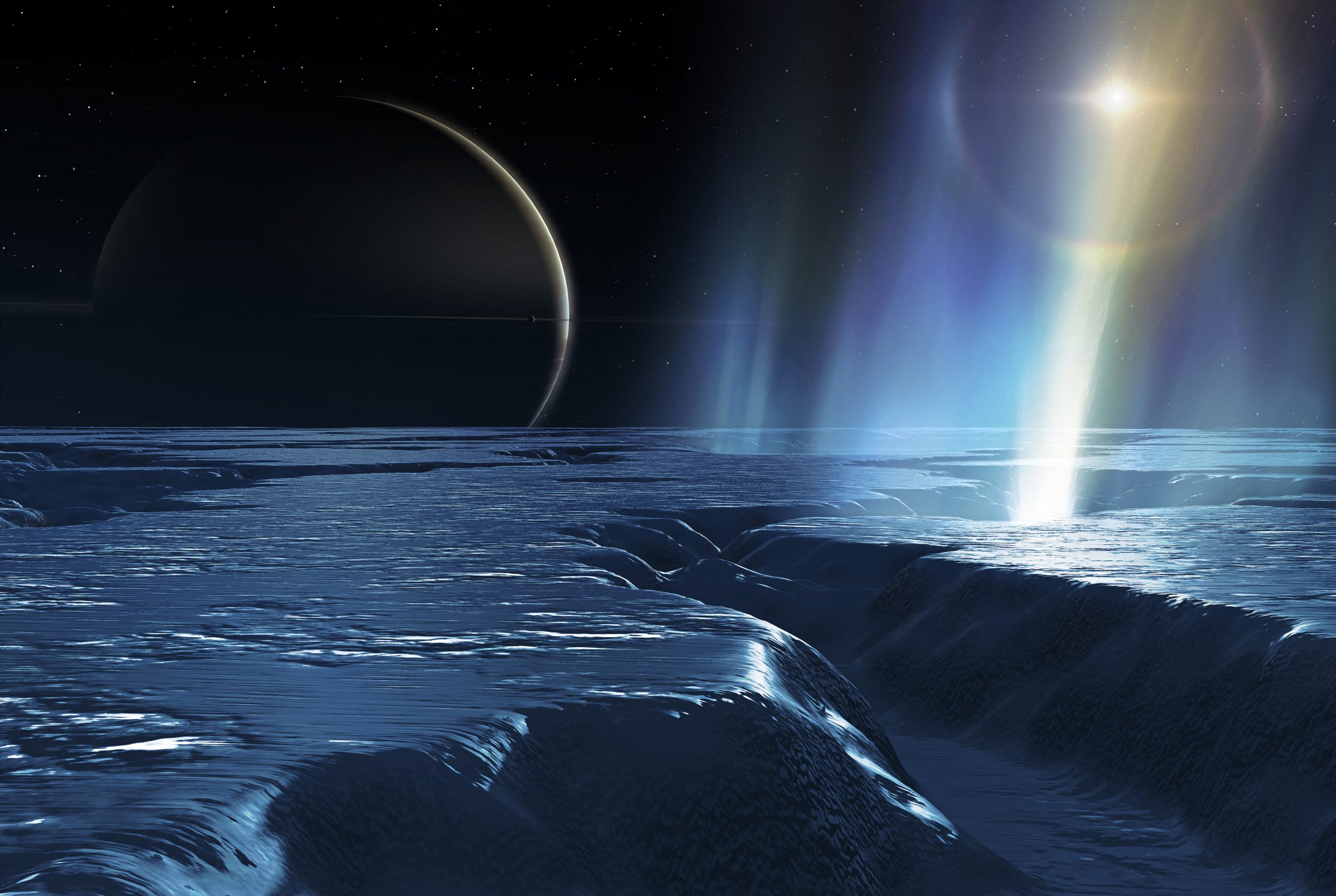Large amounts of methane have been detected by the Cassini-Huygens spacecraft in geysers emerging from the ice shield of Saturn’s moon, Enceladus. According to the researchers, it is unlikely that there are only geological processes in the background, which increases the likelihood of life on the celestial body.
The water heaters of Enceladus have long excited the imagination of scientists and ordinary people. The eruptions prove the existence of a vast global ocean located between the moon’s rock core and the surface ice shield. The Cassini-Huygens spacecraft flew over the geysers earlier and collected samples there.
In chemical analyzes, the device identified molecular hydrogen, carbon dioxide and methane, which indicates that celestial bodies are deeply rooted in Earth’s oceans. hydrothermal chimneys Similar formations may work.
It drew the attention of experts, especially the unusually high amount of methane discovered in the geysers.
“We wanted to see if microbes similar to the microbes that feed on Earth and produce methane as a result could explain Cassini’s findings,” he wrote. in outgoing contact Régis Ferrière, of the University of Arizona’s Department of Ecology and Evolutionary Biology, is lead author of a publication in Nature Astronomy. He added: If it exists methanogen Microorganisms on Enceladus, can only be found by submersible diving in the ocean under the ice shield. However, there has never been an example of such a mission in the history of space exploration.

So Ferrier and his colleagues are trying to find the source of extraterrestrial methane in a different way: They’ve created a new kind of mathematical model that combines microbial geochemistry and microbial ecological chemistry to analyze Cassini’s data, in an effort to find out whether living or nonliving processes can create gas on Earth. the moon.
Based on the results, it is very easy to imagine that the process could be linked to microorganisms that live in a hydrothermal chimney, although the abiotic (non-living) factor is not entirely ruled out – the latter would be very different from the geological processes we experience here on Earth.
What did the researchers read from the Cassini data?
On our planet, hydrothermal activity is observed when magma near the surface heats cold seawater that seeps into cracks and fissures on the ocean floor and erupts from cavities in the form of a geyser. Methane can form on our Earth during hydrothermal activity, but the process is very slow.

Most methane production is carried out by microorganisms, which use hydrothermal hydrogen as an energy source and produce methane through methane generation using carbon dioxide.
Using the simulations, the researchers primarily looked at whether enough hydrogen was being produced by the aquatic method to supply a larger microbial community, and whether there was an environment in which organisms would feel comfortable. They also looked at how potentially alien organisms would affect their environment—that is, how they affect levels of escaping molecular hydrogen and methane in geysers.
In summary, we were not only able to assess whether Cassini’s observations are compatible with the living environment of life, but we were also able to make quantitative (quantitative) predictions about what to expect when methanogenesis occurs at the bottom of Enceladus’ ocean. ” Ferrier explained.

There is a high probability that there are living creatures on the moon
The results indicate that abiotic processes alone do not explain the methane levels detected in the geysers.
On the other hand, if the biological methane composition is added to the formula, we get approximately the exact amount of methane that Cassini observed.
“Obviously we didn’t conclude that there was life in the ocean of Enceladus, but we wanted to know if the moon’s hydrothermal stacks were habitable for Earth-like microorganisms. According to Cassini data and our models, the situation is ” – Munda Ferrier.
The authors hope that their study will provide guidance for further interpretation of the Cassini data.












































